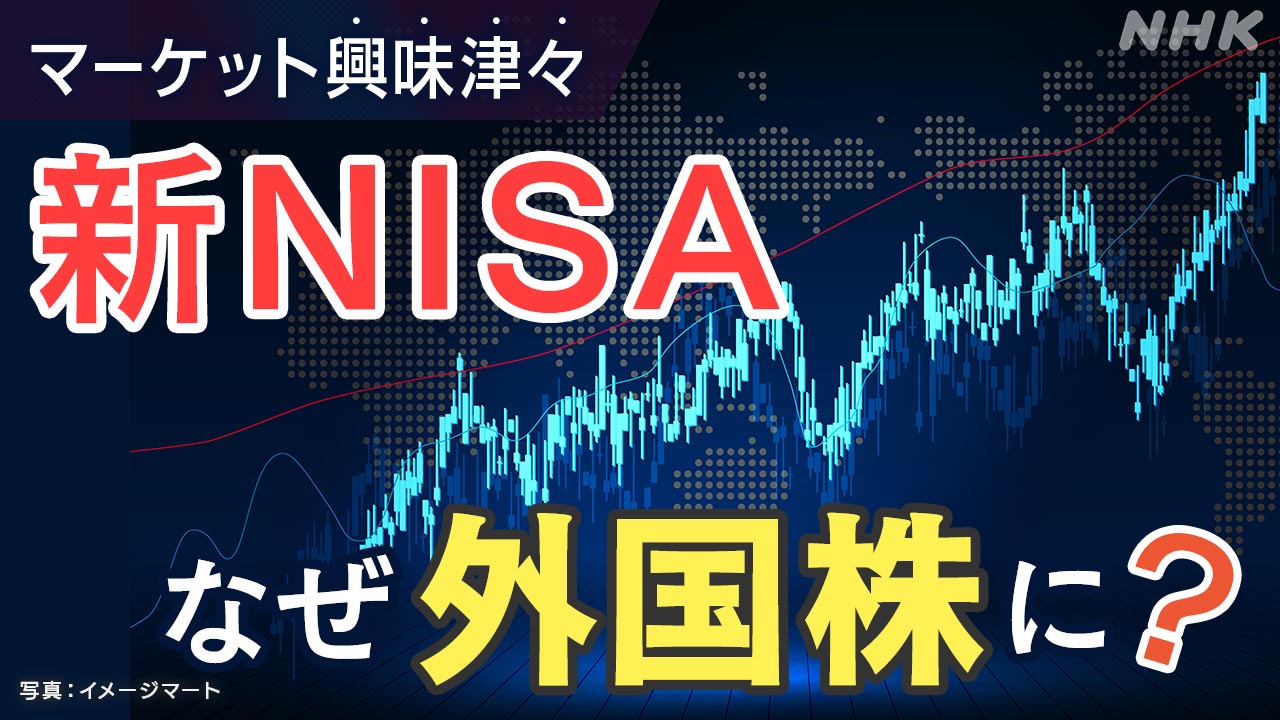One month has passed since “New NISA” started. Looking at where individuals' investment money goes, it turns out that most of it goes toward products that incorporate stocks from around the world or products that are linked to American stock indexes. With Japan's main stock indexes at their highest levels since the bubble period, why are individual investors choosing foreign financial products? (Economy Department reporter Aya Shinoda)
Top foreign stock products
Investment trusts (mainly index-linked) called "no-load" that do not charge commission fees at the time of purchase.
According to various securities companies, many new investors using the new NISA are directing their funds to this no-load investment trust.
Based on data from Mitsubishi UFJ Asset Management, we estimated the net inflow amount of this no-load investment trust last month as of the 26th of last month, and found that the top two were ``World Stocks (All Country)'' and `` These two products alone accounted for 60% of the net inflows to the top 20.
The No. 1 product, ``Worldwide Stocks,'' is a product that incorporates stocks from around the world, with a focus on the United States (a few percent of Japanese stocks are also included).
There are many products linked to overseas stocks below 3rd place, and when it comes to products that mainly focus on Japanese stocks, ``Domestic stocks (TOPIX)'' comes in 14th place, and ``Domestic stocks (Nikkei average)'' comes in 17th place. There were only 2 out of 20 places.
Why do Japanese stock-related investment trusts remain in a low ranking?
Shingo Ide, chief equity strategist at Nissay Research Institute, points to three main factors.
Weak underlying growth expectations
: ``For about 30 years, Japanese companies have refrained from investing in research and development and human resources, cutting costs to stabilize business performance and prevent bankruptcies. I think this is based on the fact that they do not have high expectations for the growth potential of Japanese companies due to structural issues such as the declining population."
``Allergies to Japanese stocks'
' among middle-aged and older investors ``Many middle-aged and older investors have lost a significant amount of the value of their invested assets due to the bursting of the bubble economy and the Lehman Shock. I still have an allergy to investing in stocks itself.”
Penetration of foreign services and awareness among young people
``The use of smartphones has become commonplace for young people, and they are regularly exposed to services from American companies such as Google, X (formerly Twitter), and Facebook. "It feels more familiar to me. Since the investment period is long, I think people are turning to American stocks because they think they can expect growth."
Looking at the trends in the Nikkei Stock Average, it peaked at 38,915.87 yen (based on the closing price) on December 29, 1989, which can be said to be the height of the bubble economy, and then declined after the bursting of the bubble economy and the financial crisis.
On March 10, 2009, the year after the Lehman shock, the price fell to 7,054.98 yen, less than one-fifth of its peak.
Veteran investors who have seen stock prices plummet first-hand say that even with the current upward trend, it is difficult to predict how long this will continue.
In that case, wouldn't the younger generation, who have not experienced a sudden drop or slump in stock prices, be less pessimistic about the future of Japanese stocks?
In this regard, Kenichi Yoshida, head of digital marketing at Mitsubishi UFJ Asset Management, explains why young people prefer overseas stocks: ``As the environment for small-scale investments and the information available on the Internet become more diverse, the social media generation... "There may be a growing tendency among consumers to buy a product if its performance is good."
Should you reevaluate Japanese stocks?
On the other hand, interest in Japanese stocks is increasing among foreign investors, who hold approximately 30% of the shares of Japanese listed companies.
Last month, the Nikkei Stock Average hit the 36,000 yen level for the first time since February 1990, and according to the Tokyo Stock Exchange, it has been a net buy for four consecutive weeks from the beginning of this year to the 26th of last month.
Even under these circumstances, overseas financial products are increasing their presence as destinations for New NISA investment funds.
However, in addition to the risk of price fluctuations, you must be careful that there is also operational risk due to exchange rate fluctuations.
On the other hand, if Japanese companies' stocks are to attract investment money from individuals, the key will be whether they can continue to reform and raise expectations for growth.
Featured plans
6th (Tuesday)
US ISM Non-Manufacturing Business Index (January)
Japan Household Survey (December)
Euro Area Retail Sales (December)
7th (Wednesday)
US Trade Balance (December)
8th (Thursday)
Japan Balance of payments (December)
Japan SoftBank Group financial results (3rd quarter)
United States Number of new unemployment insurance applications
9th (Friday)
Japan Financial results peak for listed companies (3rd quarter)
Next week will see a flurry of corporate financial results announcements, including the announcement of SoftBank Group's third quarter financial results on the 8th.
Corporate performance has been solid recently, but what does the future outlook look like?
In addition, with the help of the Tokyo Stock Exchange, listed companies are promoting reforms that will improve their reputation in the market, such as investment for growth and shareholder return measures, but the progress of these efforts should also be disclosed in conjunction with the financial results. Because there are so many of them, they are attracting a lot of attention in the market.

